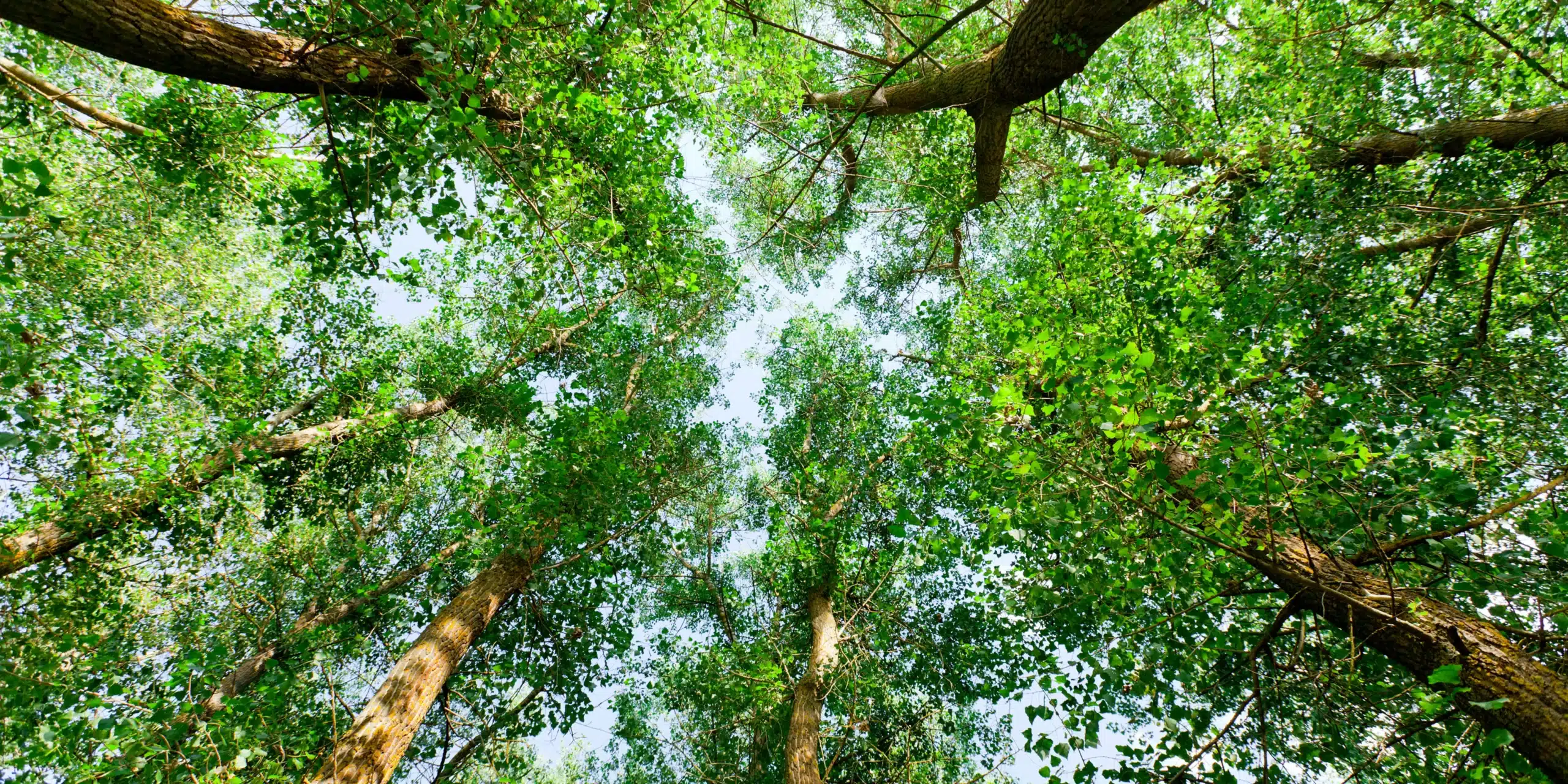
The most beautiful visits in the Ain
On this page :
- Heritage and history of the Ain
- Museums in the Ain
- Awakening the senses
- Other visits around the campsite
Heritage and history of the Ain
Bresse Bourguignonne, a history, a heritage. But to better learn and understand Bresse, we need ..:
An idea of geology: Bresse is simply the remnant of a large lake that existed in the Tertiary era, stretching from the Doubs to the Dombes plateau and from the Saône to the Jura border. Bresse is made up of ponds, forests and meadows crossed by numerous rivers. These fertile lands were perfectly exploited by farmers. But what most characterizes the landscape is the bocage, with its long, undulating stretches dotted with hedgerows.
A little etymology: the name Bresse (Saltus Brixia, Saltus Brixensi) is cited in a text from the VIᵉ century. King Gontran confirmed it in a charter in the IXᵉ century.
And history, of course: with its turbulent history over the centuries, Bresse was often the pretext for conflicts that forged its identity. Until the High Middle Ages, there was only one Bresse, part of Charlemagne’s Empire. Following the dismemberment of the Carolingian Empire, Bresse was divided between the Duchy of Burgundy, the County of Burgundy and the Kingdom of Provence.
The center and south of Bresse came under the authority of an independent sovereignty, the Sirerie de Bâgé, later attached to the County of Savoy. In 1289, the Bresse Bourguignonne region was created with the merger of the castellanies of Cuisery, Sagy and Savigny en Revermont, in exchange for the Sirerie de Coligny.
The union of the County and Duchy of Burgundy (now Franche-Comté) made it a land of trade for over a century (1317-1477).
After the death of Charles the Bold, the last Duke of Burgundy, Burgundy became part of the Kingdom of France. Bresse Bourguignonne became definitively French in 1479. This was followed by “Savoyarde” Bresse (Bresse de l’Ain) in 1601 and “Jurassienne” Bresse in 1678, when Franche-Comté became part of France. Before the creation of départements in 1790 and regions in 1956, the “3 Bresse” shared the same border.
Present-day Bresse now extends over Saône-et-Loire, Ain and Jura, and regionally over Rhône-Alpes, Franche-Comté and Burgundy. Today, all these historical events can be seen in the many castles and other architectural remains.
Take a trip back in time and discover some of France’s most famous sites, such as the Monastère de Brou and the Abbaye de Cluny, ideally located around the Ain de Mépillat campsite.

Brou Monastery
Located on the outskirts of Bourg-en-Bresse (01), the Royal Monastery of Brou, a masterpiece of flamboyant Gothic art, was built in the early 16th century by Marguerite of Austria, then Duchess of Savoy, to eternalize her love for her late husband, Philibert le Beau.
Its church roof is covered with multiple polychrome glazed tiles, faithful symbols echoing the majestic monuments found in Burgundy. The building is a true princely burial ground. Within the structure are the tombs of Philibert II of Savoy, Marguerite of Austria and Marguerite of Bourbon, among others. This solemn ensemble of finely sculpted and shaped details was designed by the finest regional and Flemish artists of the time.
Not far from the choir, the splendid chapel of Marguerite of Austria is grandiose, with its magnificent stained glass window of the Assumption and its formidable white marble altarpiece of the Seven Joys of the Virgin, embellished with seven niches representing the Annunciation, the Visitation, the Nativity, the Adoration of the Magi, the Apparition of Christ to the Virgin, Pentecost and the Assumption.
The old stained glass windows in the choir, the stalls (the famous folding wooden seats on either side of the altar) and the stone rood screen that forms the boundary between choir and nave, were all created by master glassmakers from the Lyon region and other equally skilled artists.
You’ll be delighted to visit the monastery’s three cloisters (the first cloister, the large cloister and the cloister of the outbuildings), as well as the municipal museum, located in the monastic buildings, where art collections (Flemish and French paintings from the XVᵉ to the XXᵉ century, ancient religious sculptures, Renaissance and Bresse furniture, as well as Meillonnas earthenware) are on display. So why not combine relaxation in the heart of nature at our Domaine de Mepillat campsite with cultural discovery in one of the most majestic buildings in French history? Less than half an hour from the campsite, you can plan a visit to this magnificent monastery, a must-see site in our beautiful region and France’s favourite monument!
More info
Monastère de Brou
63 Boulevard de Brou
01000 Bourg-en-Bresse
04 74 22 83 83
Distance from campsite *** Domaine de Mépillat: 31 km
Cluny Abbey
Located in Cluny (71), this Benedictine monastery extended its influence throughout Europe in the Middle Ages. Its abbey church was the largest in Western Christendom before the construction of St. Peter’s in Rome.
After nine centuries of monastic life, the site boasts a prestigious heritage, including numerous monastic buildings, a Museum of Art and Archaeology containing outstanding works of Romanesque civil sculpture, a monastic village rich in Romanesque and Gothic houses, two churches, a majestic Hôtel-Dieu and a superb panorama from the top of the Tour des Fromages.
The remains of a spiritual center, the seat of the largest medieval monastic order in the West, are waiting to be discovered as you stroll beneath the high Romanesque vaults and admire masterpieces of sculpture.
The Haras National de Cluny is well worth a visit and offers a wide range of year-round activities for young and old alike. Discover Cluny from our campsite in the Ain.
More info
ABBEY OF CLUNY
Palais du Pape Gélase Place du 11 août 1944
71250 Cluny
03 85 59 15 93
Distance from campsite *** Domaine de Mépillat: 50 km


Chateau de Chevreau
Located in the commune of Chevreaux in the Jura region, this XIIᵉ century château was destroyed in the XVIIᵉ century during the wars between France and Spain for sovereignty over Franche-Comté. Its elevated position between Bresse and Revermont allows you to appreciate the beauty and breathtaking panorama of the area.
Volunteer workcamps and actions are organized every year to bring the ruins back to life. This site can be visited all year round. Admire the surrounding walls with their towers, the upper and lower courtyards, and the extraordinary panorama.
On-site activities include guided family tours, summer events, open-air cinema, exhibitions… A picnic area is available to enjoy the setting. All the ingredients for a memorable outing from the Mepillat campsite.
More info
Association Les amis de Chevreaux Chatel
2 rue du château
39190 CHEVREAUX
09 50 35 95 77
https://www.chateaudechevreaux.com
Distance from campsite *** Domaine de Mépillat: 26 km
Chateau de Cormatin
Close to the 3-star Mepillat campsite, Cormatin (71) offers many points of interest. If you’re an art lover, check out the 17thᵉ century residence and its decorated apartments.
If you’re more interested in superb gardens, walks or hikes, why not lose yourself in the labyrinth of plants in one of France’s most beautiful gardens. Come and discover the vegetable garden and the Théâtre de Verdure, where musical plays and tales are performed in summer.
“Les Rendez-vous de Cormatin” offers around 40 performances based on classic authors.
More info
Château de Cormatin
71460 Cormatin
03 85 50 16 55
Distance from campsite *** Domaine de Mépillat: 49 kmm


Abbey of Gigny
Located in the commune of Gigny in the Jura, just a few kilometers from the Domaine de Mepillat campsite, the abbey was established by Abbot Bernon on his own land, and is recorded in texts dating back to 888. In 910, this abbot founded Cluny with monks from Gigny and Baume-les-Messieurs, another monastery under his direction. The abbey of Gigny then became a priory, donated in 1076 by Pope Gregory VII to Hugues, abbot of Cluny. The entire building is listed as a Monument Historique.
Its church preserves extraordinary elements from the Romanesque period.For children, the museum offers a small “discovery trail” booklet, also available from Baume-les-Messieurs Abbey. Finally, for those wishing to discover the surrounding area on foot, a document entitled “Boucle de randonnée pédestre autour des sites clunisiens Doubs & Jura”, designed and published by the “Chemin clunisien Franche-Comté Bourgogne” association, is available from tourist offices and sites. It offers 9 hiking loops, including one around Gigny Abbey.
More info
Abbatiale St Pierre de Gigny
Rue de l’église
39320 GIGNY
06 24 63 68 95
Distance from campsite *** Domaine de Mépillat: 30 km
Ambronay Abbey
Around our Ain Mépillat campsite, you’ll have a choice of cultural visits steeped in history. Why not take a tour of the region’s magnificent abbeys? Located not far from Ambérieu-en-Bugey, the whole village of Ambronay was built around its abbey, founded under the reign of the great Charlemagne. When you visit the building, you’ll be captivated by its magnificent cloister and the restful, luminous atmosphere it exudes. Built in Gothic style, the abbey remained independent for several centuries, managing a vast territory. It came under the protection of the Counts of Savoy. Founded in 880, the abbey’s history has been tormented by various regimes and customs. Today, it’s a great place to spend a few hours to recharge your batteries amidst the ancient stones. After the departure of the monks, art has kept it going.
Internationally renowned, Ambronay Abbey has been a meeting place for Baroque music lovers and specialists since 1989. During the festival, which takes place in September, some of the greatest names in music come together. Master classes, lectures, workshops and listening sessions are organized to introduce the public to the charms of this universe.
More info
Place de l’Abbaye
01 500 Ambronay
04 74 38 74 00
Distance from campsite *** Domaine de Mépillat: 62 km
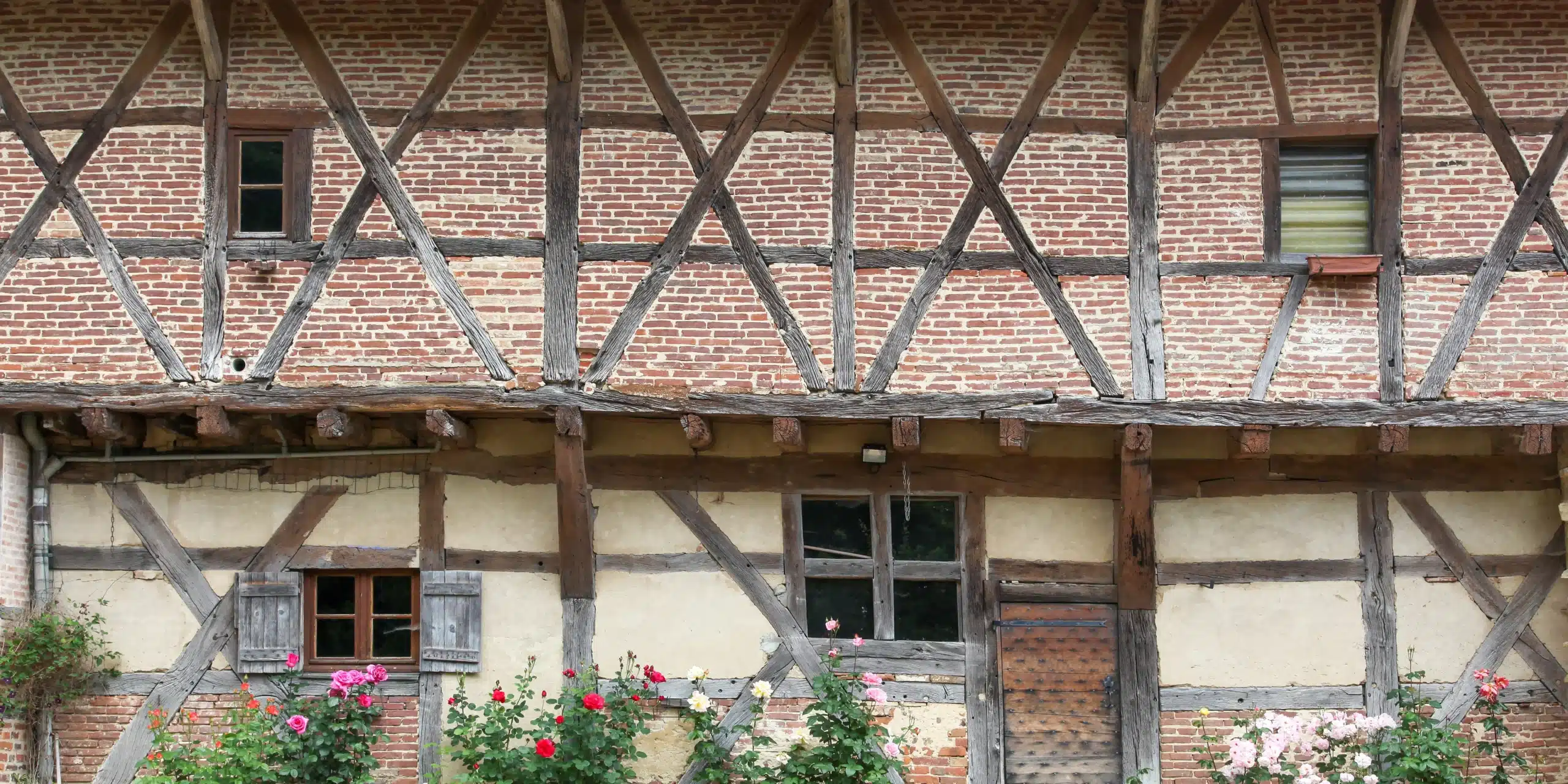
Museums of the Ain
Is curiosity one of your bad habits? Well, there’s plenty of culture to discover near camping*** Ain Mépillat.
To give you a better understanding of local habits and customs, various museums open their doors to you, revealing the secrets of daily life in Bresse and Burgundy.
Immerse yourself in a real farmhouse of yesteryear, with its period furniture and costumes, discover the crafts of centuries gone by, and lose yourself in the vegetable gardens where old-fashioned games are still in use. What about taking the place of a smuggler locked up in a royal prison? Or an archaeologist discovering the bones of prehistoric wild beasts?
Finally, museums with more contemporary themes are also worth a visit. There’s so much variety that it’s impossible not to please the whole family.
Forest Museum Farm
Located in the commune of Courtes (01), less than 10 km from your campsite in the Ain, you’ll find an authentic old Bresse farmhouse with a Saracen fireplace dating from the 16ᵉ century.
A must when you come to visit us, come and open the door of this typical “house” to admire a traditional Bresse interior. During a guided tour, experience the traditions and admire the costumes and furniture of yesteryear around the fireplace.
The farm then offers you the chance to wander through the attic and stables, encountering a variety of field tools and farm machinery.
Spend a moment in the company of farm animals (ducks, geese, Bresse chickens) and visit the kitchen garden with its vegetables of yesterday and today, as well as its aromatic plants.
More info
Espace de la Carronnière
58 route de Chalon
01560 Saint-Trivier-de-Courtes
04 74 30 77 41
Distance from campsite *** Domaine de Mépillat: 7 km


Laughing Cow Museum – Lons le Saunier
You’ll be able to see cows just around the corner from our 3-star campsite in the heart of nature. Camping Domaine de Mépillat is a country campsite where you’ll find the true values of the land and nature. But to see cows laughing, in all their colors and true to our memories, then you’ll have to plan a visit, not far from the campsite, to Lons-Le-Saunier, to the museum dedicated to the famous brand of portioned cheese.
Located in the commune of Lons-le-Saunier (Jura), this museum recaps a century of the history of the world’s most famous cow. The place has become friendly, unusual and cheeky. Despite the cheese’s rich history, the museum is very modern. La Maison de “La Vache qui rit” reinvents the brand museum with a fascinating, interactive tour.
Entirely redesigned as an atypical experience linking artistic installations and the discovery of the values of this emblematic brand, the visit is punctuated by games and educational activities, making it particularly fun and attractive for the whole family.Although the historical part of the brand’s adventure is still in the cellars, the staging features a multitude of devices such as a digital tablet for children, an animated film explaining the manufacturing process, or a film taking a tour of the world and the manipulations of nutrition. There’s also a cooking workshop where visitors can try their hand at making dishes and recipes using Bel products.In 1865, Jules Bel set up his cheese company in Orgelet, a small village in the Jura region. He sourced wheels of Emmental or Gruyère cheese, still white, from the various neighbouring cheese dairies, and refined them.
After 30 years’ work, Jules Bel retired and handed over the business to his two children, who relocated the company to Lons-le-Saunier in 1896. After the war, in 1921, Léon Bel launched his own brand. “The Laughing Cow” was born. La Maison de “La vache qui rit” welcomes visitors to the very place where the very first portions of the famous cheese were made, right in the historic center of Lons-le-Saunier.
More info
LA MAISON DE LA VACHE QUI RIT
25 RUE RICHEBOURG
39000 LONS-LE-SAUNIER
03 33 84 43 54 10
Distance from campsite *** Domaine de Mépillat: 48 km
Domaine des Planons – Bresse Museum
Located in the commune of St Cyr-sur-Menthon, close to our campsite in the Ain, the Musée de la Bresse – Domaine des Planons is set in 40 hectares of land, 22 of which are open to the public. You can take the whole family for a walk and discover old games and vegetable gardens. Picnics are possible in fine weather.
A very modern 3,000 m² museographic space, integrated into the environment, will transport you from the 15ᵉ century to the present day, into the daily life of the Bresse people.Permanent and temporary exhibitions on traditional costumes, headdresses, Bresse enamels, handcrafted jewelry, architecture, the gastronomy so dear to Bresse… take place here.
More info
987 chemin des Seiglières,
01380 Saint-Cyr-sur-Menthon
03 85 36 31 22
Distance from campsite *** Domaine de Mépillat: 35 km
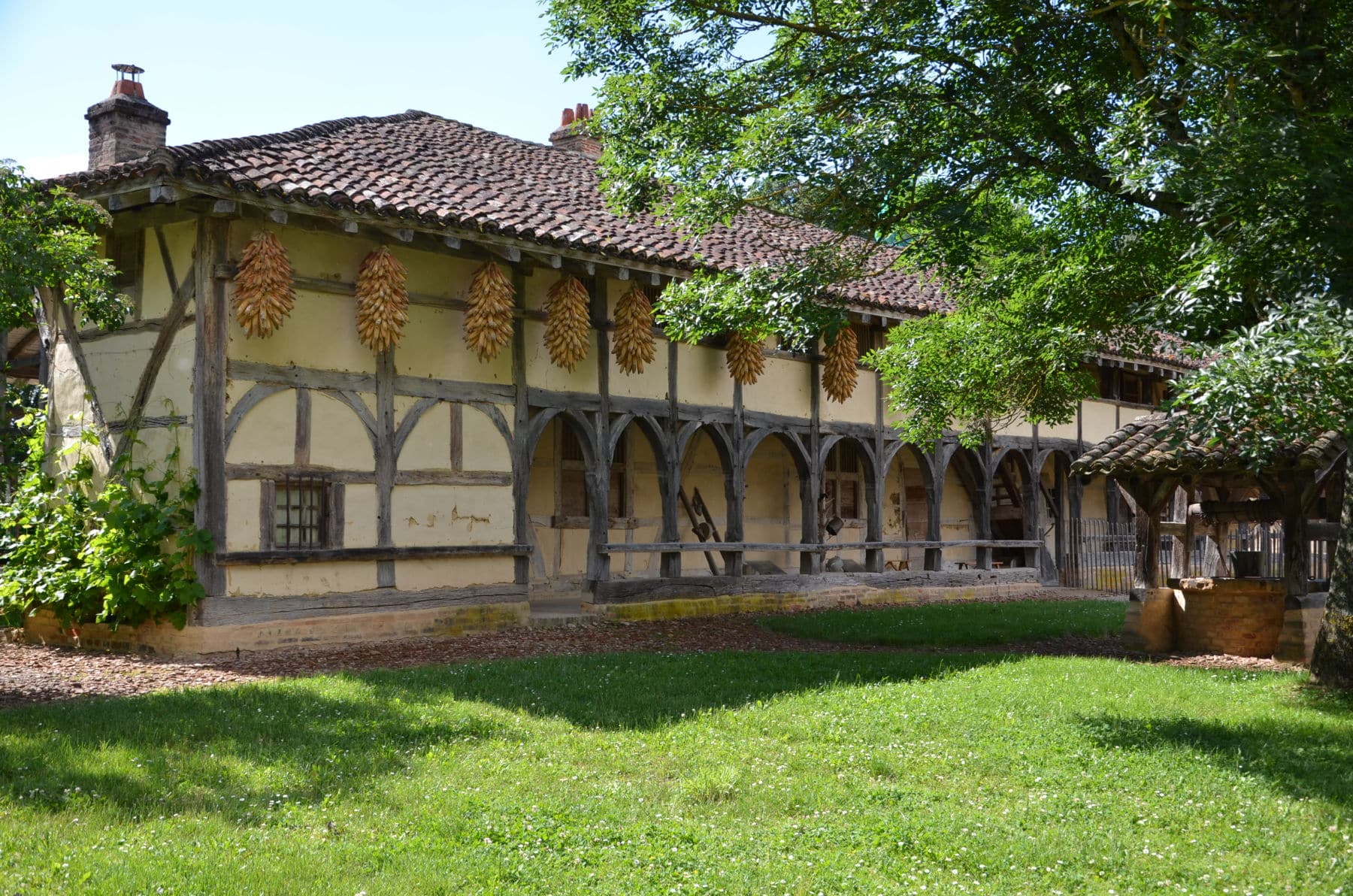
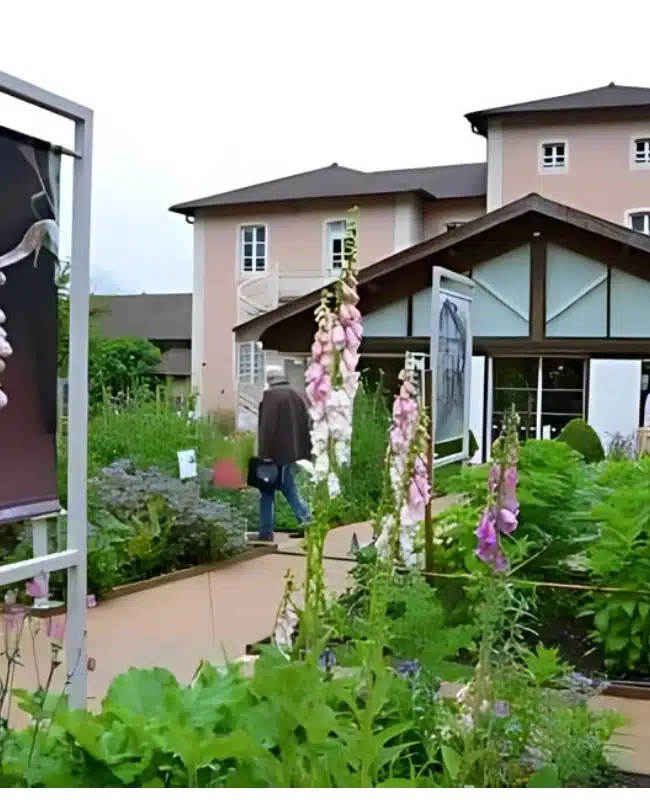
Royal Prisons of Saint Amour
Located in the commune of St-Amour (Jura), come and step inside real prisons of yesteryear and step back in time. These XVIIIᵉ century prisons offer a unique visit in terms of their history, but also their secrets.During the reign of Louis XIV, there was a lot of smuggling in this region of Franche-Comté. The Justice des Gabelles was established to remedy the illicit trade in salt, tobacco and cloth. Completed in 1741, the building served as an auditorium and prison.
After the revolution and until 1869, it was used solely as a prison for prisoners walking from Lons le Saunier to Bourg en Bresse. An audio tour recalls the life of this very special, authentic building.During the tour, we follow the journey of a prisoner convicted of smuggling. We go from the guardhouse to the dungeons, crossing the corridors to “hear” their true story, at the corner of a door or the bend of a staircase. These prisons are secure and partly restored. You’ll visit the jailer’s quarters, the chapel, the prisoners’ courtyard, two detention rooms and three dungeons with their wicket doors. But don’t stop at just the prisons in this charming little town. Once you’ve contacted the Saint-Amour Tourist Office, you can set off on a discovery tour of the town, solving riddles along the way as you make your way through the narrow streets and mysterious places of Saint-Amour. Like an Escape-Game, you’ll have to find a symbolic object in the town. Discovery, culture and questions await you in a fun way from our campsite in Saint-Nizier le Bouchoux.
More info
Les prisons royales de St-Amour
18 rue du commerce
39160 Saint-Amour
03 84 48 76 69
15 km
Revermont Museum
Located in the commune of Cuisiat (01), near our 3-star campsite, in the village’s former town hall and school, the Musée du Revermont presents the cultural and social particularities of the region, from the 18th century to the present day.
It reinforces a sense of identity by comparing and being open to other times and places. Over the generations, the Museum has researched, preserved and showcased objects and plants that bear witness to the passing of time.Its splendid conservatory kitchen garden features some 650 species of plants from the region, both ancient and surprising.
During the season, the museum offers a wide range of events based on its themes, for young and old alike.
More info
Musée du Revermont
40 rue Principale, CUISIAT,
01370 Val-Revermont
04 74 51 32 42
https://patrimoines.ain.fr/n/musee-du-revermont/n:811
Distance from campsite *** Domaine de Mépillat: 42 km
Ecomuseum of Bresse Bourguignonne
Located in the commune of Pierre-de-Bresse in Saône-et-Loire, the Ecomusée de la Bresse bourguignonne has been housed in the Château des Comtes de Thiard since 1981. It is the place where the memory of the Bresse region is gathered. Through the various rooms and permanent exhibits, you can discover the natural environment, history, know-how, ancient architecture and aspects of traditional and modern life in Burgundy’s Bresse region. An excursion not to be missed during your vacation at the Mepillat campsite.
More info
Ecomusée de la Bresse Bourguignonne
Rue du Château, 71270 Pierre-de-Bresse
03 85 76 27 16
http://www.ecomusee-bresse71.fr/accueil/
Distance from campsite *** Domaine de Mépillat: 34 km

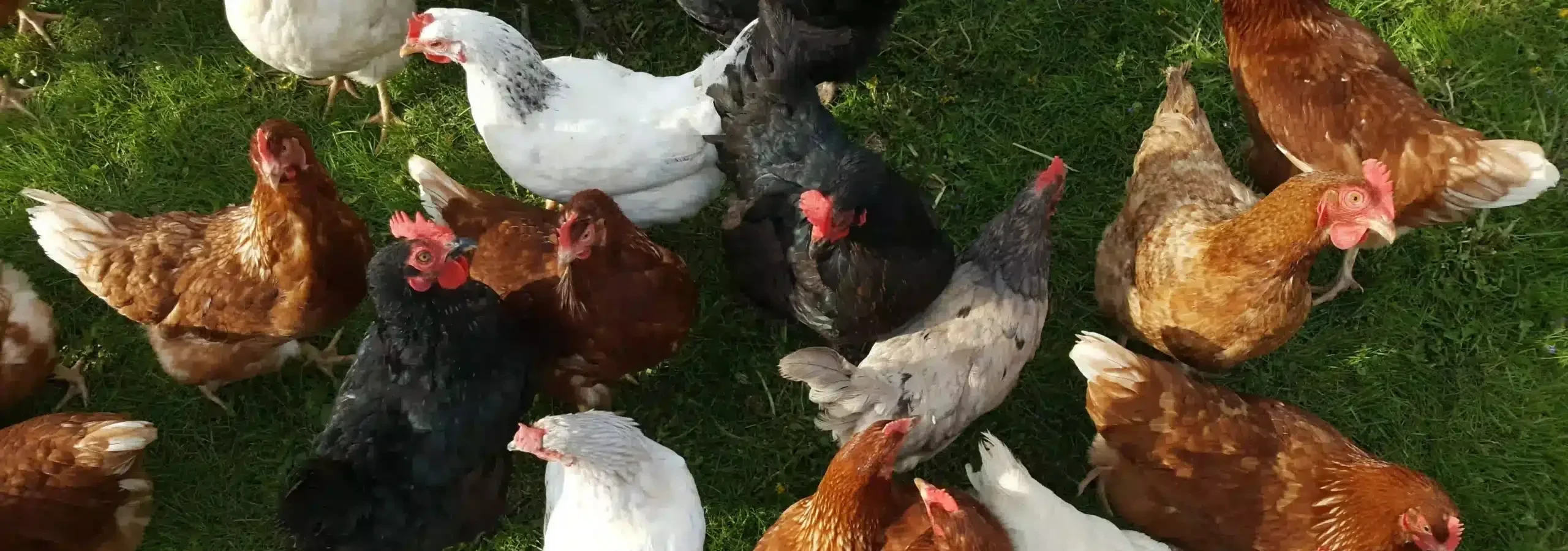
Awakening the senses
Widely renowned for its quality of life, Bresse offers a gastronomic heritage that invites you to indulge your senses. A land of flavors recognized for centuries thanks to our renowned ambassador of course: Bresse poultry.
“Queen of fowls and fowl of Kings”. Its origins date back to the XVIIᵉ century. It was in 1936 that a breeding zone was specifically delimited, thus defining the Bresse territory. In 1957, the breed was officialized as the “Gauloise de Bresse blanche”, with its white plumage and blue legs. This led to the passing of a law granting an Appellation d’Origine Contrôlée for Bresse poultry. Today, it is the only poultry in the world to benefit from the Protected Designation of Origin. The AOC zone covers an area of 3,356 km², spread over the three départements of Ain, Saône-et-Loire and Jura.
But to stop at poultry alone would be restrictive. In fact, Bresse butter and cream are also renowned and AOC-labeled, and the delicious shortbread made from gaude flour will delight your taste buds, as will the corniottes; the famous Tête de veau will enchant you.
You’ll find many quality restaurants offering dishes with rich local flavors. But it’s also at the many markets that you’ll find these products and be able to meet the local producers. Don’t be afraid to miss out on these weekly events: there’s a market every day of the week, in a village close to the Domaine de Mépillat campsite***. Finally, for those who want to discover specific products directly on the farm, many wineries, farms and other sales outlets open their doors to offer their products and advice.













